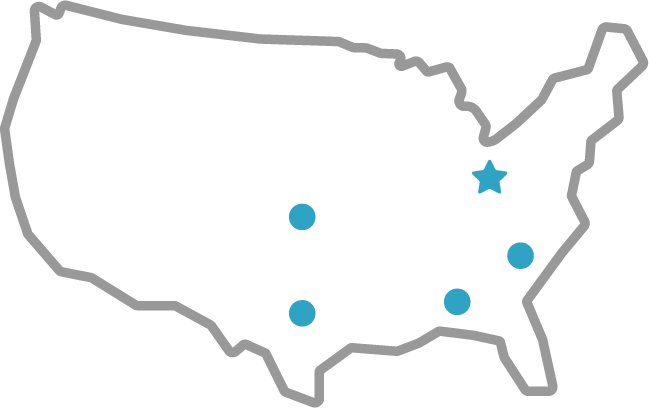The Power of Movement (Energy Industry Innovations Part 3)“When the winds of change blow, some people build walls and others build windmills.“ An ancient Chinese proverb

Energy Industry Innovations: The Potential Power of Movement
Last week, we explored the exciting new innovations inspired by mother nature’s green plants. This week, the JCL Energy Journal takes a “running” leap into new technologies that harness the power of movement. Capturing kinetic energy isn’t a new concept- windmills, watermills, and dams have been around for centuries. Wind turbines across the world are turning as we speak, producing clean electricity. But the average individual has not had widespread access to personal devices that convert kinetic energy to electric energy- until now.
Uncharted Play
Sports fans, rejoice… now you can enjoy a game of soccer that won’t only result in a good time, but also a charge for your phone! In 2011 Jessica Matthews (along with classmate Julia Silverman) took an engineering class for non-engineers at Harvard University. They were tasked with creating a new product that served a social good. Their creation: the Soccket. This innovative soccer ball was able to capture the kinetic energy of game play and store it in an internal generator. The power stored could then power a lightbulb or charge a cell phone. From there, the company Uncharted Play was born. According to their Fundable fundraising campaign, 30 minutes of play can power a portable LED lamp for 3 hours. Each Soccket purchased includes one portable lamp.
Matthews’ Soccket was an instant hit. President Obama even took notice, and Matthews was a guest at the White House. Despite a bumpy start to the company, as well as her partner Silverman leaving in 2015, Matthews persisted. She learned, she grew, and she improved, and Uncharted Play improved right along with her. Now, they have expanded their technology to include a jump rope (“Pulse”) and a football that also collect and store kinetic energy. According to an article on Inc., “The soccer balls and jump ropes are off-grid energy sources, but they’re also distributed with a curriculum–a five-part course that uses the products to teach STEM concepts–and a message to kids to “think out of bounds.”” Uncharted Play’s toys have been widely purchased and distributed by NGOs throughout Africa.
By 2016, Uncharted Play had 15 patents pending, and had fundraised an impressive amount of money. Matthews isn’t stopping there. At present, she is on the hunt for corporate partners that can integrate the “M.O.R.E.” (motion-based, off-grid renewable energy) technology into their existing products to achieve similar results. Possible future products from these partnerships could include a baby stroller that can charge a cell phone. All this is only the beginning. Matthews is in the process of rebranding Uncharted Play to become M.O.R.E.- more than just a toy company. Matthews goal for her new energy company is to “democratize on-demand power for everyone” by creating a micro-generating system that can capture the kinetic energy of anything that moves. For Matthews, staying still isn’t an option in the quest for renewable power.
Heel Strike Generator: The German Perspective
Jessica Matthews isn’t the only one looking to capture the power of movement from everyday activities. Both German researchers and US Army R&D Engineers have taken “steps” to collect energy from footsteps. Both projects have created small devices that are worn in the sole of a shoe to generate energy when walking.
For the Germans, they are focusing on creating a dual-action device that includes both a “shock harvester” that collects power when the heel strikes the ground, and a “swing harvester” that produces power from the swing of the foot. The drawback to this device is that the small size of the device means a small power output. At peak performance, they only generate in the 3 to 4 milliwatt range, which is not enough to charge a smartphone. However, they do produce enough power to operate sensors and transmitters, which could mean the range of applications is quite large. Klevis Ylli from HSG-IMIT (a research center in Villingen-Schwenningen, Germany) told the BBC in an interview that “We believe we have built comparatively small devices, considering the power output.” They envision using the device to help with the creation of a self-lacing shoe that would benefit the elderly and differently-abled.
Heel Strike Generator: The American Perspective
On the American project, the focus is quite different. The U.S. Army is looking to provide power for the electronic devices worn by the soldiers, such as their radios and night-vision goggles. Providing continuous power for these devices would cut down on the need for soldiers to carry batteries, thus lightening their load. This would be critical in remote areas, harsh environments, and multiple day treks. This device would be worn in a boot and captures the motion of the soldier’s footsteps to harvest power.
Unfortunately, this research has run into a similar drawback as the German project; small size generally means small amounts of power. In a US Army press release, Kathryn Bailey stated, “No single human motion produces enough excess power, without injury, to charge MIL-STD batteries in a reasonable amount of time, so CERDEC is investigating an entire suite of alternative energy options that will work in tandem to achieve tactical energy independence for the Soldier and small unit. These include efforts to “upgrade” standard Soldier equipment, such as combat boots and rucksacks.” The “Energy Harvesting Assault Pack” captures the natural up-and-down movement of the walking solder and converts it into energy.
For both the Germans and the Americans, these are the first steps on a road to self-produced power. The potential applications of this technology are exciting, especially considering that a large majority of the world’s population relies on walking as their main form of transportation. The possibility of using footsteps to generate energy makes a great amount of sense. Soon, the power of movement has the potential to power our daily lives.
Capture Mobility
Capturing our own energy as we move isn’t the only way to harness the everyday power of movement. Sanwal Muneer, a Pakistani entrepreneur, has designed a way to capture the energy of moving vehicles. As we know, the reliance on motor vehicles as a form of transportation has had a detrimental effect on our environment. Muneer’s company Capture Mobility is fighting back by producing a hybrid roadside wind turbine designed to capture the wind produced by passing traffic. In addition, the turbines also take in and filter the air to reduce air pollution. To top it all off, the turbine has solar panels on the top for added power generation. A fully charged turbine can hold a kilowatt of energy. This would be enough to run two lamps and a fan for around 40 hours. The energy generated by the turbines has a range of uses- powering street lights, vehicle charging stations, and more.
Muneer’s inspiration hit at trip to the racetrack. In an interview with Shell Global, he recalls, “At first, the breeze from the cars was just a welcome relief from the humidity. Then I started to think about how we could use that energy.” Muneer’s project is now based out of the Edinburgh Centre for Carbon Innovation in Scotland. The city of Dundee, Scotland has seen the first of these turbines put into place, where trials have been successful. Muneer’s challenge now is to find the most cost-efficient way of producing these turbines on a large scale. This will be especially important in developing countries. The prospect of turning something detrimental into a source of clean power is an exciting opportunity, all thanks to a day at the races!
The Future of Energy
This month the JCL Energy Journal has explored new innovations and inventions that provide the promise of a future based on clean energy sources. From the power of plants, to ocean waves, and even our own footsteps and the power of movement, there have been a myriad of exciting advances to provide renewable power. Next week, we finish our series with an inside look at innovations going on right here at JCL Energy. We continually strive to remain industry leaders with our focus on service, sustainability, and expert knowledge. Stay tuned!
Sources
Bailey, Kathryn. “Soldiers Are ‘Power Walking’ to Extend Dismounted Missions | Article | The United States Army.” Www.Army.Mil, US Army, https://www.army.mil/article/203648/soldiers_are_power_walking_to_extend_dismounted_missions . Accessed 22 May 2022.
“Capture Mobility.” Interface Knowledge Connection, Interface, https://interface-online.org.uk/case-studies/capture-mobility . Accessed 22 May 2022.
Fenn, Donna. “This Company Has Come Up With a New Alternative Energy Source: Kids | Inc.Com.” Inc.Com, Inc., 2016, https://www.inc.com/donna-fenn/2016-30-under-30-uncharted-play.html.
Hartmans, Avery. “Uncharted Play: Jessica O. Matthews Pivots From Soccer Ball to M.O.R.E.” Business Insider, Insider, 8 Oct. 2016, https://www.businessinsider.com/uncharted-play-jessica-matthews-pivot-2016-10.
Rincon, Paul. “Smart Shoe Devices Generate Power from Walking – BBC News.” BBC News, BBC News, 15 Jan. 2015, https://www.bbc.com/news/science-environment-30816255.
“Uncharted Play.” Fundable | Crowdfunding for Small Businesses, https://www.fundable.com/unchartedplay . Accessed 18 May 2022.
“Winds of Change: Turbine Turns Traffic into Energy | Shell Global.” Shell Global, Shell Global, https://www.shell.com/inside-energy/turbine-turns-traffic-into-energy.html# . Accessed 22 May 2022.


